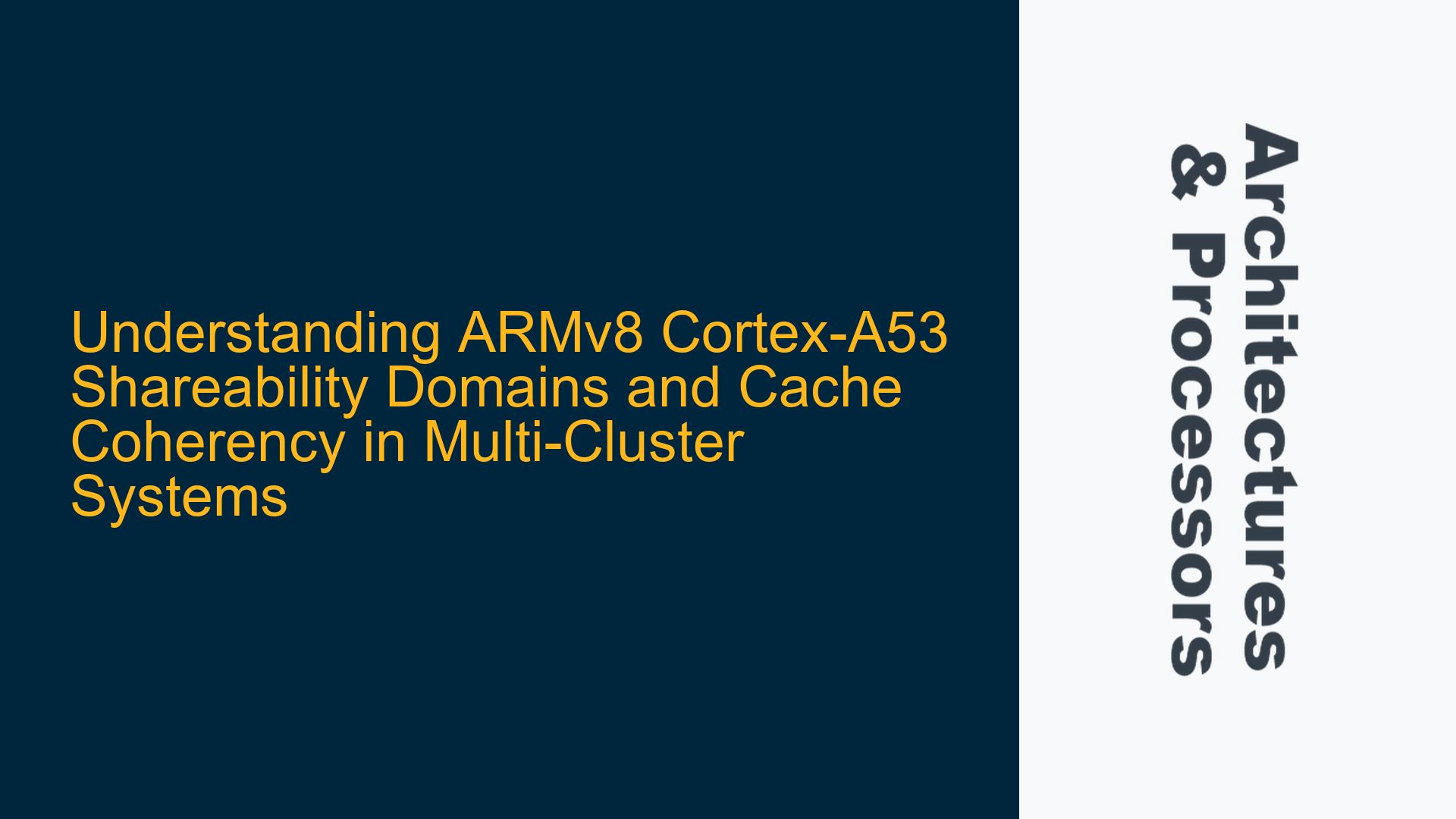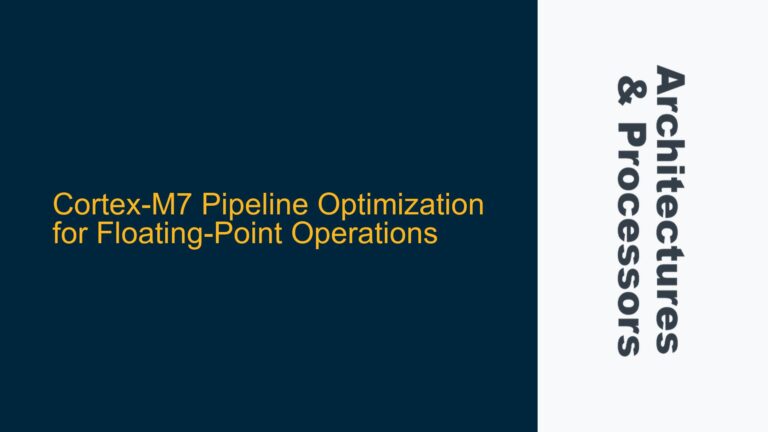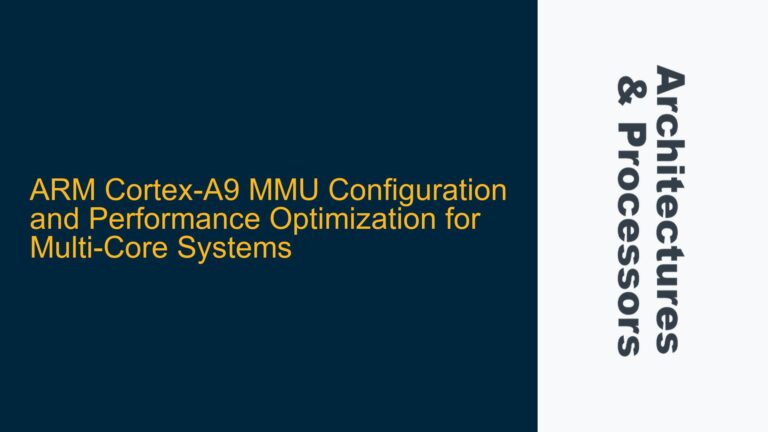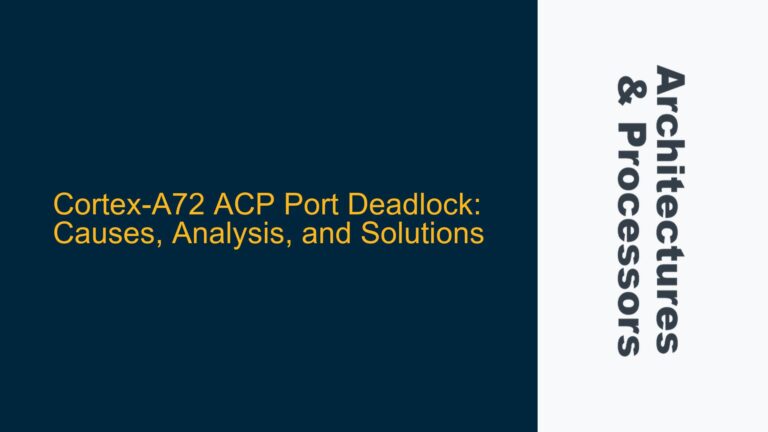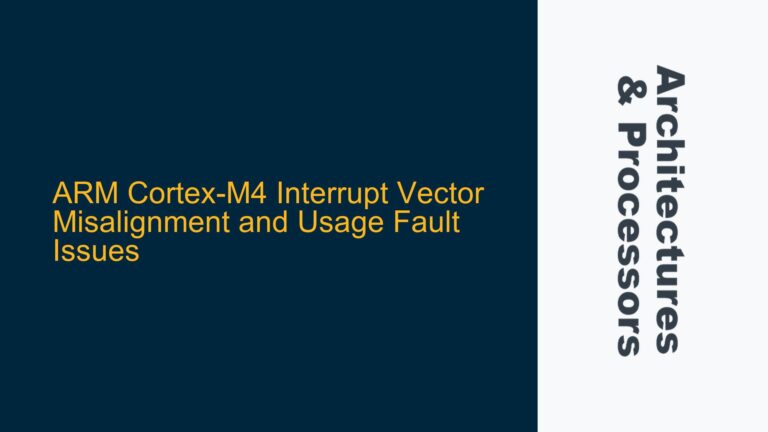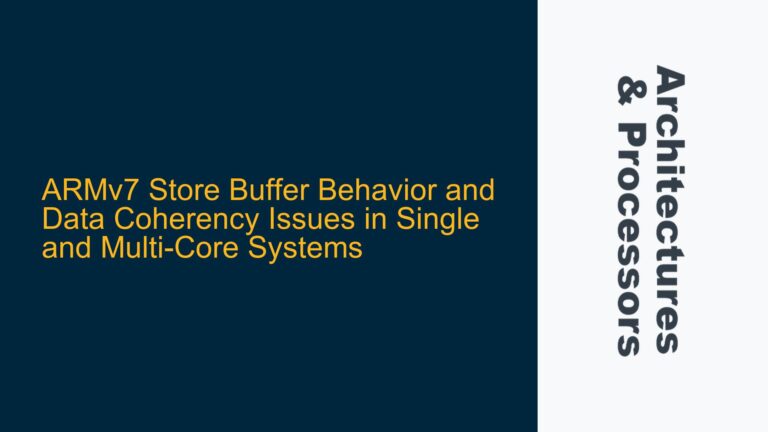ARM Cortex-A53 Shareability Domains and Cache Coherency in Multi-Cluster Systems
The ARM Cortex-A53 processor, a popular choice for embedded systems and mobile applications, is designed with a focus on power efficiency and performance. One of its key features is the support for multiple cache levels and shareability domains, which are critical for maintaining cache coherency in multi-core and multi-cluster systems. However, the interpretation and configuration of these shareability domains, particularly in systems with complex cache hierarchies like those involving the CCN-512 interconnect, can be challenging. Misconfigurations or misunderstandings of these domains can lead to subtle cache coherency issues, performance bottlenecks, and even system failures.
In this guide, we will delve into the intricacies of shareability domains in the ARM Cortex-A53, focusing on the inner and outer shareability attributes controlled through the Translation Control Register (TCR) and page descriptors. We will also explore how these domains interact with the cache coherency mechanisms, particularly in systems with multiple quad-core clusters and an outer cache like the CCN-512’s L3 cache.
Inner and Outer Shareability Domains in ARM Cortex-A53
The ARM Cortex-A53 processor supports multiple levels of cache, typically L1 and L2 caches within each core and cluster, and an optional L3 cache that may be shared across multiple clusters. The shareability domains in the Cortex-A53 are defined by the ARM architecture to manage how cache coherency is maintained across different levels of the memory hierarchy. These domains are controlled through the TCR register and page descriptors, which determine whether a memory region is marked as inner shareable, outer shareable, or non-shareable.
The inner shareable domain typically includes the L1 and L2 caches within a single cluster. This means that when a memory region is marked as inner shareable, cache coherency is maintained within the cluster, and any cache maintenance operations or snoop requests are broadcast to all cores within that cluster. The outer shareable domain, on the other hand, extends beyond the cluster and includes the L3 cache and other system components that may be shared across multiple clusters. When a memory region is marked as outer shareable, cache coherency is maintained across the entire system, and cache maintenance operations or snoop requests are broadcast to all clusters and their respective caches.
The distinction between inner and outer shareability is crucial in systems with multiple clusters, as it determines the scope of cache coherency operations. For example, if a memory region is marked as inner shareable, cache maintenance operations will only affect the caches within the cluster, and any changes to that memory region will not be propagated to the L3 cache or other clusters. Conversely, if a memory region is marked as outer shareable, cache maintenance operations will affect all caches in the system, ensuring that all cores and clusters have a consistent view of the memory.
Snoop and Maintenance Requests in ARM Cortex-A53
The ARM Cortex-A53 processor uses snoop and maintenance requests to maintain cache coherency across different shareability domains. Snoop requests are used to ensure that all caches in the system have a consistent view of the memory, while maintenance requests are used to perform cache maintenance operations such as invalidations, clean operations, and clean-and-invalidate operations.
In the context of shareability domains, the behavior of snoop and maintenance requests is influenced by the inner and outer shareability attributes. When a memory region is marked as inner shareable, snoop and maintenance requests are broadcast to all cores within the cluster, ensuring that the caches within the cluster are coherent. However, if the memory region is also marked as outer shareable, these requests are broadcast to all clusters and their respective caches, ensuring that the entire system has a consistent view of the memory.
The ARM Cortex-A53 Technical Reference Manual (TRM) states that when the inner shareable attribute is set, the broadcastinner signal is asserted, which in turn enforces the broadcastouter signal to be asserted. This means that setting the inner shareability attribute will cause snoop and maintenance requests to be broadcast to both the inner and outer shareability domains. This behavior is critical in systems with multiple clusters, as it ensures that cache coherency is maintained across the entire system, even when memory regions are marked as inner shareable.
Cache Coherency Challenges in Multi-Cluster Systems with CCN-512
In systems with multiple quad-core clusters and an outer cache like the CCN-512’s L3 cache, the configuration of shareability domains becomes even more complex. The CCN-512 interconnect is designed to provide high-bandwidth, low-latency communication between multiple clusters and the L3 cache. However, the interaction between the inner and outer shareability domains and the CCN-512’s cache coherency mechanisms can lead to subtle issues if not properly understood and configured.
One common challenge in such systems is ensuring that cache maintenance operations are correctly propagated across the entire system. For example, if a memory region is marked as inner shareable but not outer shareable, cache maintenance operations will only affect the caches within the cluster, and any changes to that memory region will not be propagated to the L3 cache or other clusters. This can lead to cache coherency issues if other clusters or the L3 cache have stale copies of the memory region.
Another challenge is ensuring that snoop requests are correctly handled by the CCN-512. The CCN-512 is responsible for broadcasting snoop requests to all clusters and their respective caches, but the behavior of these requests can be influenced by the shareability attributes of the memory region. If a memory region is marked as inner shareable but not outer shareable, snoop requests may not be correctly broadcast to all clusters, leading to cache coherency issues.
Configuring Shareability Domains for Optimal Cache Coherency
To ensure optimal cache coherency in multi-cluster systems with the ARM Cortex-A53 and CCN-512, it is essential to carefully configure the shareability domains and understand how they interact with the cache co
